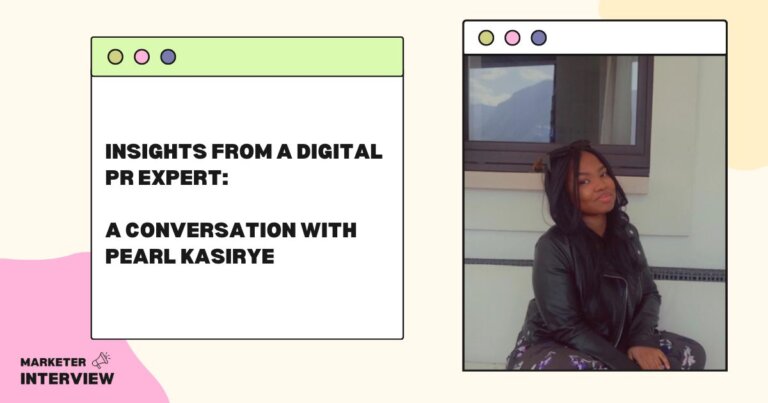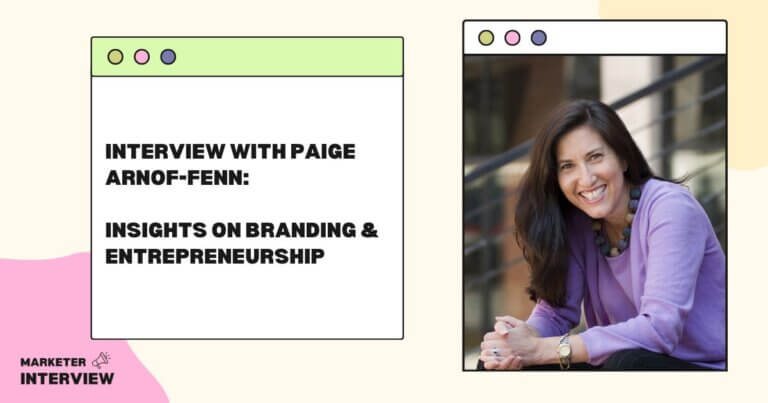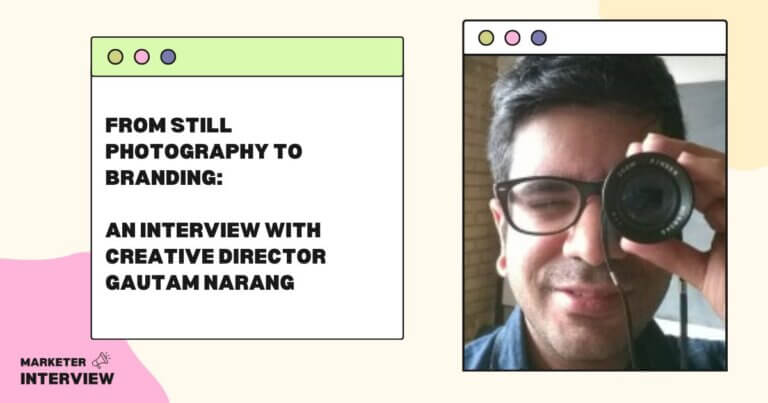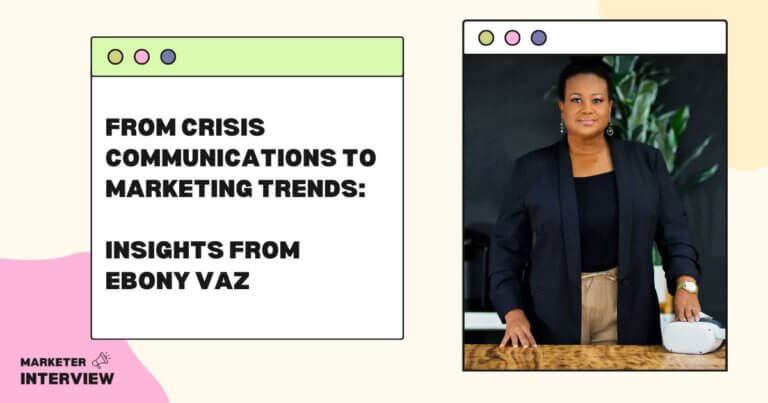The Art of Brand Strategies: An Interview with Cristina Siscanu
Welcome to Marketer Interview, where we connect with inspiring marketers who have made significant strides in marketing.
Today, we have the pleasure of interviewing Cristina Siscanu, a dynamic Global Brand & Communications Manager at Kubeark.
With a diverse background spanning sociology, human resources, and international relations, Cristina brings a unique perspective to the world of marketing.
Throughout her career, Cristina has mastered the art of effective communication and developed expertise in brand strategies, PR, and leadership.
She has captivated audiences with her engaging storytelling and adapted to the ever-evolving landscape of communication channels.
Join us as we delve into Cristina’s professional journey, explore her insights into brand and communication strategies for tech startups, PR, and leadership, and uncover the tools and software she relies on for success.
Contents
- 1 Please briefly overview your career path and how you found your way into marketing.
- 2 What drew you to the intersection of sociology, human resources, and international relations?
- 3 As a Global Brand & Communications Manager, what are your key responsibilities and challenges?
- 4 What effective brand and communication strategies have proven successful for tech startups?
- 5 What advice can you give marketers looking to develop impactful PR campaigns, especially for startups?
- 6 Could you provide insights into the evolving role of social media platforms in brand and communication strategies?
- 7 From your perspective, what qualities and skills are necessary for marketers to become influential leaders in their organizations?
- 8 What tools and software do you utilize as a Global Brand & Communications Manager?
- 9 What has been the most challenging project or situation you’ve faced throughout your career, and how did you overcome it?
- 10 In your opinion, what are the upcoming trends or innovations in brand and communication strategies should marketers keep an eye on?
Please briefly overview your career path and how you found your way into marketing.
My fascination with people and their narratives has been a lifelong trait. From an early age, I was drawn to individuals’ personal and meaningful stories, recognizing that our words subtly sculpt our persona, much like how brands are crafted.
My career path, though a bit of a rollercoaster ride, kicked off in the banking sector, where I worked as a CRM Manager for corporate clients. This role provided me with real insights into the evolution of businesses and the ingredients that contribute to their success.
After gaining this initial business acumen, I found myself at the intriguing intersection of sociology, human resources, and international relations. Here, I uncovered the magic formula for understanding how people behave and how to communicate effectively. Believe it or not, it boils down to humor and empathy.
I wore numerous hats as I made my way into the marketing world. I learned SEO and copywriting techniques and the intricacies of social media and PR. I experimented with many communication channels and tailored my approach to each one.
This journey took me through companies such as Emiral Media Production, H.appyCities, DRUID AI, and Kubeark. At each stop, I fine-tuned my storytelling skills and adapted to different platforms, always striving to keep my audience engaged and intrigued.
All these experiences have shaped my approach to marketing, specifically brand and communication strategies, leading me to where I am today.
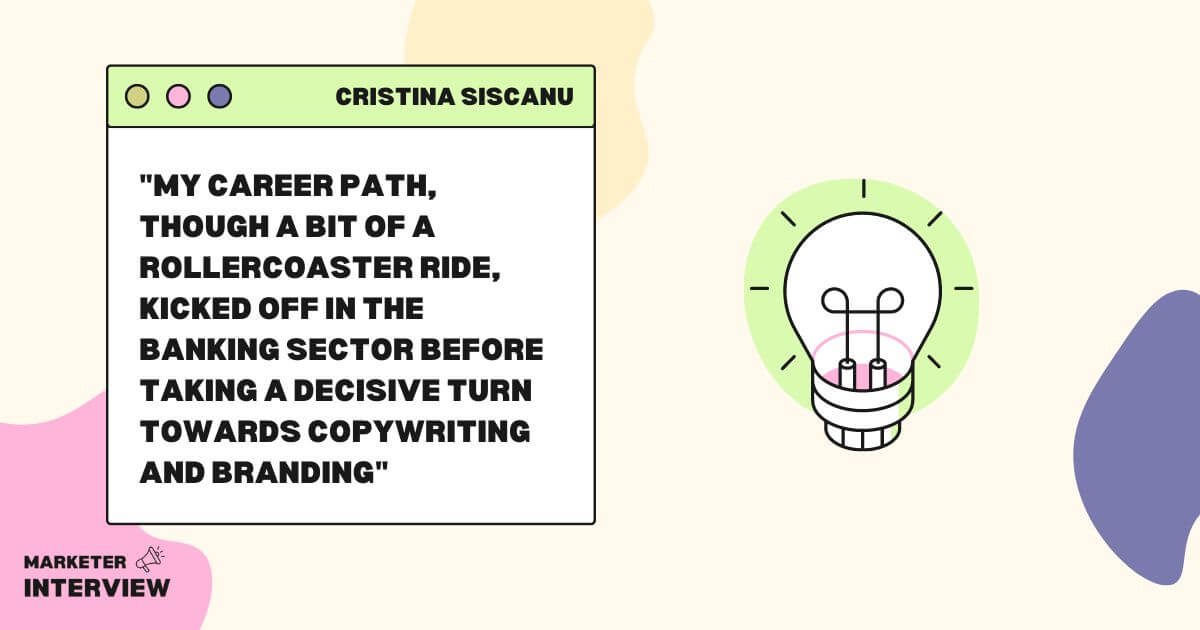
What drew you to the intersection of sociology, human resources, and international relations?
Studying sociology gave me a theoretical framework and a deep understanding of human behavior and interactions.
Particularly, my engagement with social psychology provided insights into how various stimuli trigger individual responses and influence group dynamics. These ideas proved essential during my time working in international relations.
Working in diplomacy underscored the importance of maintaining integrity in communications and branding. In diplomatic circles, perhaps more than anywhere else less is often more – a concise message carries far greater weight.
These lessons from my past experiences are precious to me, and I endeavor to incorporate them consistently while creating a global brand and communication strategy for Kubeark. The blend of my sociological insights and diplomatic experiences gave me a unique lens to understand and shape the dynamics of brand interactions.
As a Global Brand & Communications Manager, what are your key responsibilities and challenges?
Developing comprehensive brand and communication strategies that support our company’s objectives is one of my primary responsibilities. This involves both internal and external communication across multiple channels.
At the same time, I work diligently to maintain the integrity of our brand across all our marketing initiatives and communications, ensuring a consistent brand voice throughout.
I oversee the creation of a broad spectrum of marketing and communication materials, from blog posts to social media content, newsletters, and press releases. My role also includes managing public relations, which involves creating and maintaining relationships with media outlets, influencers, and other key stakeholders and handling crisis management.
Last but certainly not least, analyzing and reporting on the effectiveness of our strategies forms a crucial part of my job as it allows us to make data-driven decisions and improvements.
What effective brand and communication strategies have proven successful for tech startups?
Tech startups present a unique landscape when it comes to branding and communication. Traditional methods sometimes cut it. So, there’s usually a need for fresh, innovative approaches to truly make an impact.
SaaS companies see one such approach that has proven effective in building this strategy. They prioritize customer engagement by cultivating forums and online communities, allowing real-time feedback, and fostering a sense of belonging among users. When the community speaks positively about the product, it results in organic growth and boosts brand credibility.
Another impactful strategy is the emphasis on emotional selling. This goes beyond listing product features or technological advancements. It’s about resonating with the audience emotionally, addressing their pain points, and demonstrating how the product or service can improve their lives or businesses.
Finally, always appreciate the compelling power of storytelling. People connect with stories much more than facts and figures. Telling the brand’s journey, overcoming challenges, or even sharing customer success stories can create a memorable impression and strengthen the brand’s identity.
For instance, when working with DRUID AI, we built a vibrant online community, centered our communication on how our solutions eased customer struggles, and frequently shared success stories. These collective efforts significantly contributed to building DRUID AI’s brand presence.
Your audience often wants to root for you, see you disrupt the status quo, and be part of your journey. Using these strategies effectively can turn them from users/customers into loyal brand advocates.
What advice can you give marketers looking to develop impactful PR campaigns, especially for startups?
In the startup world, we face unique challenges like budget constraints and less brand recognition. It’s important to remember that PR is a marathon, not a sprint. Patience, authenticity, and persistence are critical ingredients for success.
First, it’s imperative to understand your audience deeply. As marketers, we’re here to solve problems and address needs. You can only effectively do this with a clear picture of who you’re talking to.
Second, your brand’s voice should be unique and recognizable. At Kubeark, we’ve worked hard to develop and maintain a voice that embodies our company’s personality and core values. Consistency is critical here – it builds brand recognition and earns trust from your audience.
Creating a clear, compelling message is the third cornerstone of an effective PR campaign. The message should resonate with your audience and align with your brand voice.
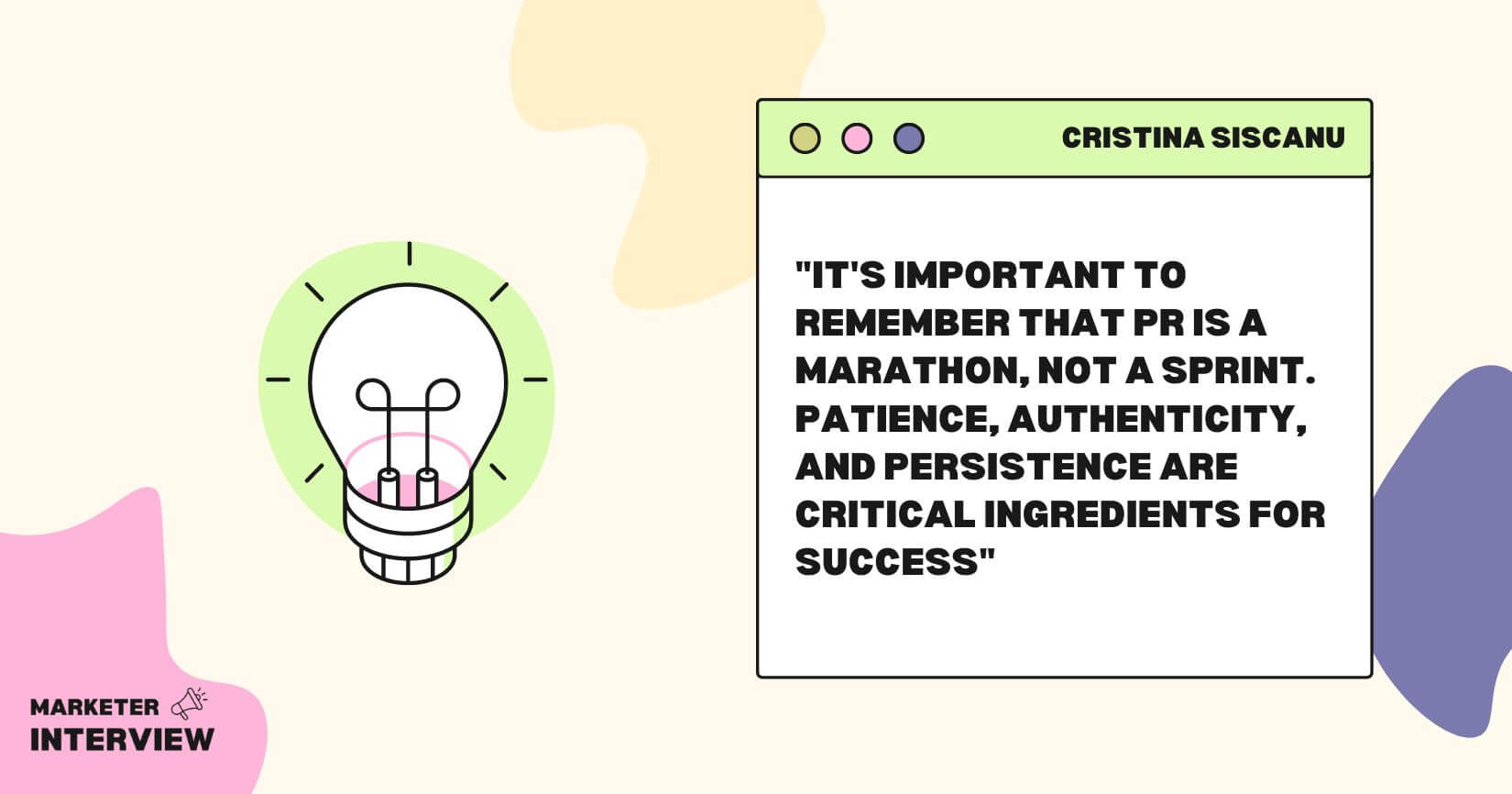
Aligning your PR initiatives with your entire marketing plan is a crucial additional consideration. PR shouldn’t be practiced in isolation. Instead, it ought to enhance and support all of your marketing initiatives. This cohesiveness guarantees that your brand’s message is the same across all platforms and aids in growing its reach.
Next, make sure to measure the success of your PR campaigns. This data will guide your future strategies and help refine your approach.
Lastly, focus on relationship building. I’ve spent considerable time nurturing relationships with journalists, influencers, and industry experts. These relationships will determine how your message is shared. And keep in mind that you should aim for genuine connections that benefit both parties.
Social media platforms have grown from mere interaction channels to significant stages for brands to connect, engage, and build relationships with their target audiences. They are vital for driving visibility, sharing brand narratives, and providing real-time customer service.
To effectively leverage social media, businesses should create high-quality, engaging content tailored to each platform’s unique audience and format. Regular interaction and prompt responses to customer inquiries or comments can enhance brand presence, showing your audience that their voice matters.
Finally, data analytics from these platforms can provide valuable insights into customer preferences and behavior, guiding your marketing strategies.
From your perspective, what qualities and skills are necessary for marketers to become influential leaders in their organizations?
Marketers must cultivate certain qualities to become effective leaders within their organizations. Here are my top five:
Strategic thinking: Looking beyond the daily grind to shape future-oriented strategies based on market trends, competitor activities, and customer needs is crucial.
Authenticity: Being genuine, staying true to your values, and walking your talk will inspire trust and loyalty in your teams.
Empathy: Leaders must practice empathy to truly understand and appreciate their team members and customers’ perspectives and feelings. Plus, it will foster a positive work environment and build products or services that resonate deeply with customers.
Adaptability: With the technological and marketing landscapes constantly evolving, leaders must be willing to adapt, embrace change, and guide their teams through these shifts.
Decision-making abilities: Leadership often requires making tough and fast decisions, which requires courage and resilience.
To sum it up in a lighter way, I’ll borrow a quote from Teddy Roosevelt – “The best leader is the one who has enough sense to pick good men to do what he wants done, and the self-restraint to keep from meddling with them while they do it.”
What tools and software do you utilize as a Global Brand & Communications Manager?
I use various software and tools to streamline operations, but the following have been real game-changers: Canva, Quillbot, DeepL, Grammarly, and ChatGPT.
Canva helps me with everything related to graphic design. Its wide array of design tools has simplified the process of creating visually engaging content for various marketing materials, from social media posts to newsletters and presentations.
Quillbot has been a game-changer in improving our copywriting process. As an AI-driven writing tool, it assists me in rephrasing and enhancing our content to make it more appealing and easy to understand for our audience.
DeepL has proved to be an irreplaceable ally in translating content. Its AI-backed translations are impressively accurate, ensuring our core message retains its essence across multiple languages.
Grammarly is another crucial tool we employ daily. Beyond spotting grammatical errors or typos, it offers real-time tone, brevity, and clarity feedback.
Speaking of AI, another tool that has made a remarkable difference is ChatGPT. It’s handy when brainstorming content ideas, drafting responses, or needing quick copywriting assistance. Also, this tool shows that the era of AI-driven marketing is already here. I expect more small businesses to use accessible tools to help generate marketing copy or connect with their customers around the clock.
What has been the most challenging project or situation you’ve faced throughout your career, and how did you overcome it?
One of the most challenging experiences I’ve faced in my career was organizing the Moldova Film Festival in 2021 during the pandemic. It was a massive project, and our team comprised just five dedicated individuals with a shared dream and a relentless drive to succeed.
To say that it was challenging would be an understatement. Navigating the restrictions and safety concerns of the pandemic, coordinating with filmmakers and sponsors, managing the logistics, promoting the event, and ensuring a seamless virtual experience for our audience — every aspect posed its own set of difficulties. There were countless sleepless nights, problem-solving on the fly, and moments where the magnitude of the task seemed overwhelming.
However, despite the hurdles, our small but mighty team pressed on. We constantly motivated each other, solved problems collectively, and worked tirelessly to bring our vision to life. When the festival day arrived, and we saw the successful execution of the event we had been tirelessly working towards, it was a moment of immense pride and satisfaction.
Reflecting on this experience, the most valuable lesson I learned was the power of a committed team. Any challenge can be surmounted even when faced with an enormous task, with the right people, drive, and a shared vision. This has influenced my leadership style and approach to project management, instilling in me a deep appreciation for the potential of a unified, determined team.
In your opinion, what are the upcoming trends or innovations in brand and communication strategies should marketers keep an eye on?
Personalization is becoming more crucial than ever, with AI and data analytics paving the way for hyper-personalized experiences and targeted marketing. Consumers increasingly value brands that ‘speak their language’ and address their specific needs.
The growth of voice search and conversational AI is also something to watch. More consumers are turning to voice assistants for their search needs, making voice search optimization a crucial part of future marketing strategies.
Moreover, video content continues its rise as a preferred medium, primarily live streaming and short, snackable video formats like those on TikTok and Instagram Reels.
Lastly, a trend toward sustainability and social responsibility in branding cannot be overlooked. Brands committed to social issues and sustainable practices resonate more with modern consumers.


